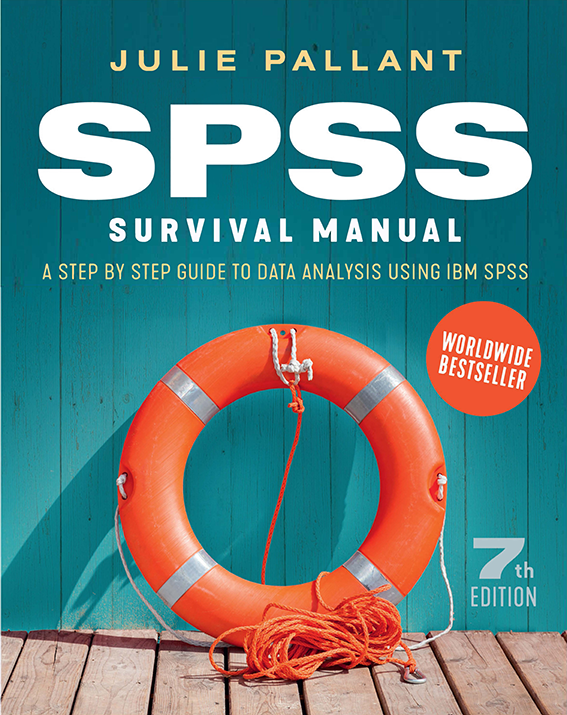Starting your analysis
Most students get quite excited when they finish entering data and they have a data file to analyse. However, before diving in to address all your research questions there are a few things you need to do first. I have listed these below, along with the related chapter in the SPSS Survival Manual.
Chapter 6
Check the characteristics of the subjects that make up your sample. You will need this information for the method section of your report.
Chapter 6
Obtain descriptive statistics for each of the variables you will be using in your study. These should include means, standard deviations, kurtosis, skewness, and minimum and maximum values. Check that these values are appropriate.
Chapter 5
Check all the variables in your data file for errors (particularly out-of-range values).
Chapters 5, 6 & 7
Check the distribution of scores on each of your variables—depending on the variable, you will need to use histograms, boxplots, bar graphs or stem and leaf plots. Look out for very skewed distributions or any unusual pattern of scores. Also check for extreme outliers—these can affect some analyses and may need to be recoded or removed.
Chapter 8
Perform the necessary data manipulation procedures (e.g., recode, compute) to create any new variables you need. This is important when creating total scores on a scale, or collapsing down a variable into a smaller number of categories. Afterwards, always run Frequencies on these new variables to check that the procedure has been done correctly.
Chapter 10
When choosing which statistical technique to use for your analysis, always check that you have the right type of variables (categorical/continuous). Consider whether a parametric or a non-parametric technique is the most appropriate.
Chapter 9
Check the reliability of the scales you intend using in your analyses. What are the Cronbach alpha values for each scale? How do these results compare to those reported in the literature?
Parts Four and Five
Check with your statistics books and the SPSS Survival Manual to ensure you are not violating any of the major assumptions for the analyses you intend to conduct. This might involve checking that you have enough subjects in your groups, that the variance for each group is similar, or that the distribution of scores on your variables is not too skewed.
Chapter 11
For your continuous variables, check the pattern of intercorrelations. How strongly and in which direction are your variables related? How does this compare with the results reported in the literature? You may also need to obtain scatterplots of the correlation between pairs of your major variables. These are useful for checking for linear relationships between variables.
SPSS Survival Manual
Remember that SPSS will conduct the analyses that you ask it to do, whether or not these analyses are appropriate. The old saying 'Garbage in, garbage out' applies. It is up to you to ensure that you understand what you are doing and also what the output means.
A few additional tips





